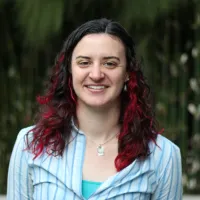Postdocs Address Range of Issues
Ostensibly, the ultimate goal of academic training is a tenure track faculty position. Unfortunately, these expectations don’t match reality. Only about 25 percent of UCSF’s postdoc scholars will ultimately make it to a tenure track position. Nationwide, that number is closer to 1 in 10.
These stark realities led recently to the creation of P(ostdoc)-Value. The new group hopes to challenge the UCSF community to become leaders in innovating the postdoc as much as UCSF innovates medicine and research.
“The root cause of the current problem,” said Saori Haigo, a third-year postdoc and P-Value organizer is how the NIH funding structure incentivized the expansion of postdoctoral positions far past sustainable levels. “Instead of being oriented toward training, because of the NIH funding structure, a lot of universities realized this was a huge source of revenue for obtaining research grants.”
P-Value is seeking “tangible and discrete actions” UCSF could take to address this problem said Katie Thompson–Peer, a second-year postdoc in Yu–dong Jan’s laboratory and P-Value organizer.
In early March, nearly 100 postdocs, graduate students, staff, and faculty attended a P-Value forum in Mission Bay’s Genentech Hall. There, postdocs gave five short presentations covering a range of topics—from creating more autonomous funding for postdocs, to improving mentoring and better tracking postdoc experiences, to improving childcare access for postdocs.
One of the main calls to action from this forum was to institutionalize the postdoc. “People tend to discount the importance the institutional structure can have on how the postdoc experience goes,” said Thompson–Peer. “Often when one is interviewing for a postdoc [position], they only look at the individual lab environment, not the importance of the institution.”
The panel discussed tangible ways in which the postdoc could become more embedded within the structure of the university by providing greater tracking and transparency for postdoc career outcomes and mandatory mentorship training.
Although UCSF has attempted to get partial information on postdoc outcomes through various means, comprehensive data on the 1,057 postdocs currently at UCSF does not exist. One suggestion was to require entrance and exit surveys to start to assess whether the postdocs’ experiences matched their expectations.
Many of the suggestions generated during the panel discussion could immediately improve the day-to-day lives of postdocs, but they are unlikely to stem the never-ending supply of eager young scientists burning to work in academia. “It’s a supply and demand problem,” Haigo said.
“I do think it’s unrealistic that a posdoc will ever go back to being a short one- to two-year position as the standards for publishing are different than they were 20 years ago,” Haigo said.
Even so, Thompson–Peer, Haigo, and others shared in the hope that ultimately postdoc positions will transition back to a position one holds only if they want to actively pursue a research intensive career.
“A postdoc should have to be an active decision that someone makes, not the default,” according to Thompson–Peer.
Another portion of the event focused on actions UCSF could take to support postdocs with families. Child care for an infant takes up 62 percent of a postdoc salary. These financial realities combined with the high cost of living force some postdocs to choose between career and family. One new suggestion from the forum was to designate money paid for child care as pre-tax. Thompson–Peer said it was “a fantastic, practical suggestion that was exactly what we were hoping for.”
Whether or not the administration will act on these suggestions remains to be seen. The postdoc task force formed in 2014 hasn’t finalized its agenda, but postdocs like Thompson–Peer remain hopeful that change is possible.
“Maybe this is naïve, but I do think the University wants to support its people and has resources available to do so. The numbers and facts speak for themselves, and I think the administration will find some of them compelling if we are persuasive,” she said.
View the complete presentation. View the live-tweeting from the event.



